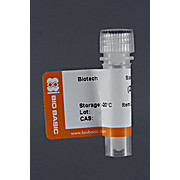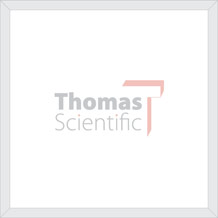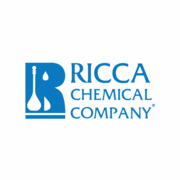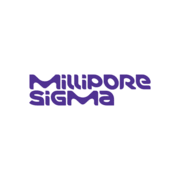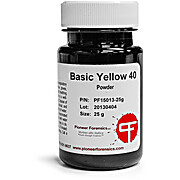Lab Stains and Dyes
-
Sudan Black B
Bio Basic Inc.Sudan black B: Sudan Black B was found to eliminate lipofuscin-like autofluorescence in mammalian neural tissue without adversely affecting other fluorescent labels. It was also found to reduce autofluorescence in archival formaldehyde-fixed paraffin-embedded myocardium tissue. Sudan…
-
Methylene Blue, biological stain
BeanTown ChemicalCAS: 122965-43-9 EC No: 200-515-2 MDL No: MFCD00150006 RTECS: SO5600000 Powder Molecular Formula: C16H18ClN3S·xH2O MW: 319.85 (anhydrous) Melting Point: 180° (decomposes)
-
Fluorescein Isothiocyanate, Isomer I (FITC)
Bio Basic Inc.The Bio Basic Inc. fluorescein isothiocyanate isomer I [FITC] is suitable for laboratory and research use. Application: For Laboratory Research Only
-
Methylene Blue solution, 1% w/v in water
BeanTown ChemicalCAS: 61-73-4 MDL No: MFCD00012111 Liquid Molecular Formula: C16H18ClN3S MW: 319.85
-
Azure II
BeanTown ChemicalCAS: 37247-10-2 MDL No: MFCD00080716 Powder Molecular Formula: C16H18N3S·C15H16N3S·2Cl MW: 625.68
-
Colloidal Blue Stain
G-BiosciencesG-Biosciences Colloidal Blue Stain is a mass spectrometry compatible stain that offers nanogram sensitive detection of proteins. The stain offers ten times more sensitivity compared to classical Coomassie R- or G-250 detection. The Colloidal Blue Stain is able to detect <10ng BSA. In…
-
8-Anilino-1-naphthalene sulfonic acid
MP Biomedicals8-Anilino-1-naphthalene Sulfonic Acid is a hydrophobic polarity sensitive fluorescent dye useful as a site probe to detect conformational changes in cell and micelle membranes and molecules such as proteins. ANSA is also used as a fluorescent probe for the estimation of the critical micelle…
-
Brilliant Blue G
BeanTown ChemicalCAS: 6104-58-1 EC No: 228-058-4 MDL No: MFCD00078482 Powder Molecular Formula: C47H48N3NaO7S2 MW: 854.02
-
Indigo Carmine
Bio Basic Inc.The Bio Basic Indigo Carmine is suitable for use in laboratory use only. It can be stored at a temperature of 18 to 25 degree C.
-
Ethidium Bromide Solution
MP BiomedicalsA 10 mg/mL Ready-To-Use solution of EtBr in specially filtered, deionized water. Ethidium bromide (EtBr) is useful for all applications requiring nucleic acid staining including CsCl plasmid DNA isolation and is the most commonly used nucleic acid stain for PAGE or agarose gel electrophoresis.…
-
Ricca Methylene Blue Milk Smear Stain
Ricca ChemicalThe Ricca Chemicals methylene blue milk smear stain with a composition of 60.08%1, 1, 2, 2-tetrachloroethane, 31.96% ethyl alcohol, 3.61% acetic acid, 2.24% water, 1.6% methyl alcohol, 0.52% methylene blue trihydrate, is suitable for use in laboratory use only. It can be stored at a temperature of…
-
Electron Microscopy Sciences 99% Ammonium Molybdate Reagent
Electron Microscopy SciencesThe Electron Microscopy Sciences ammonium molybdate reagent comes in a 100 gram bottle and is ideal for the process of negative staining of viruses for TEM. Application: Used in the Negative Staining of Viruses for Tem
-
Ricca Hematoxylin Stain Solution
Ricca ChemicalHematoxylin is a compound extracted from heartwood of the logwood tree with a chemical formula of C16H14O6. This naturally derived dye has been used as a histologic stain, ink and as a dye in the textile and leather industry. As a dye, haematoxylin has been called Palo de Campeche, logwood extract,…
-
-
Mayer's Hematoxylin Solution, Modified
G-BiosciencesMayer’s Hemotoxylin Stain, modified. Modified for enhanced shelf-life whileavoiding use of Chloral Hydrate. Manufactured with BSC certified reagents.
-
Bromocresol Purple
MP BiomedicalsBromocresol purple binds quantitatively with human serum albumin forming a stable complex with absorbance maximum at 600 nm. The intensity of the color produced is directly proportional to the albumin concentration in the sample. Bromocresol Purple is used as a pH indicator (5.2-6.8 : yellow to…
-
Ricca Wright's Stain
Ricca ChemicalThe Ricca Chemical Wright's stain is composed of 94.45% methyl alcohol, 4.99% glycerin, 0.39% Wright's stain, 0.09% potassium dihydrogen phosphate, 0.04% giemsa stain and 0.04% sodium phosphate dibasic. It is suitable for identification of different blood cell types. It can be stored at a…
-
Basic Fuchsin
Hardy DiagnosticsBasic fuchsin a stronger more intense counterstain, that produces a darker red color; works especially well with anaerobes and other difficult to stain organisms.
-
Ricca Papanicolaou Stain
Ricca ChemicalThe Ricca Chemical papanicolaou stain with a composition of 81% ethyl alcohol, 14.69% water, 4.05% methyl alcohol, 0.24% orange G and 0.02% phosphotungstic acid hydrate, is vital in cervical cancer screening. It is very helpful in differentiating gynecologic and non-gynecologic cytology smear. It…
-
Carbohydrazide
Electron Microscopy SciencesFormula: CO(NHNH2)2 Formula Weight: 90.08 CAS #: 497-18-7 Melting Point: 152-153°C For GACH embedding kit. A water-miscible, lipid-retaining, embedding polymer for E.M.. Heckman, et. al., Ultrastruct. Res., 42,156 (1973).
-
Giemsa Stain Stock Solution
ExaxolThe Exaxol giemsa stain stock solution is mainly used in research facilities and chemical laboratories to conduct wide range of experiments. It is available in sturdy bottle that endures heavy and rigorous usage. Application: For Laboratory use only
-
Cobalt Chloride Hexahydrate
MP BiomedicalsCobalt chloride is utilized in commercial applications such as electroplating, catalyst preparation, painting on glass and porcelain, and in the manufacture of vitamin B12. It is also used as a humidity and water indicator; when cobalt chloride is used with desiccants, it will change from blue to…
-
Gram Iodine Stain
ExaxolThe Exaxol gram iodine stain features a metal-free formulation and comes in an impact-resistant bottle. It is mainly designed to use in chemical laboratories and research facilities. Application: For Laboratory use only
-
Acridine Orange Hemi (Zinc Chloride) Salt
Bio Basic Inc.The Bio Basic Inc. acridine orange hemi (zinc chloride) salt is suitable for research and laboratory use. It is used during cell cycle determination. Application: For Laboratory Research Only
-
Coomassie® Brilliant Blue R-250
MP BiomedicalsCoomassie® Brilliant Blue R-250 is a fast acting, sensitive dye. Brilliant Blue R can be used for staining proteins on polyacrylamide electrophoresis gels. Improvement of sensitivity and background have been accomplished using Brilliant Blue dyes in a colloidal form. Other applications for…
-
BBL™ Lactophenol Cotton Blue Stain Droppers are used in wet amounts for examination of fungi (50/sp, 500/ca). Hermetically sealed in ampule One-day supply Drop-by-drop dispensing Directions To perform tests, squeeze the dropper to crush the ampule. Invert the…
-
-
Uranyl Nitrate
Electron Microscopy SciencesA Universal EM Negative Stain used for viruses. In tissue samples it stabilizes nucleic acids and cell membranes. These solutions are more stable than uranyl acetate and they react primarily with negatively charged groups in the absence of phosphate ions. Grade: Reagent Grade, A.C.S. …
-
Fluorescent Brightener 28
MP BiomedicalsFluorescent Brightner 28 is a colorless organic compound that fluoresces (clear bluish) under ultraviolet radiation. It is related structurally to Fluorescent Brightner 9 (Calcofluor White MR) which was used by Jefferies and Belcher and Maeda and Ischida in plant tissue studies. Fluorescent…
-
Basic Yellow 40 - 25 gm
Arrowhead ForensicsBasic Yellow 40 is a yellow dye used with a forensic light source or UV lamp after cyanoacrylate development of latent prints. Basic Yellow fluoresces well between 365 and 485 nanometer. A fluorescent dye-stain used to enhance cyanoacrylate-developed latent prints. A forensic light source or…
-
HARLECO® Eosin Y Solution Alcoholic Saturated
MilliporeSigmaSynonyms: Counterstain Chemical formula: Mixture General Product Use: A saturated solution of Eosin in alcohol. Can be used for glycol/methylmethacrylate processed tissues.
-
Sudan IV
MP BiomedicalsSudan IV has been used industrially to color oils, waxes, shoe polish, greases, oily-resin lacquers, varnishes, cellulose acetate and acrylic resins, and in wood stains. As a biological stain, it is used primarily to stain lipids and fatty substances present in cells and tissues. The color imparted…





